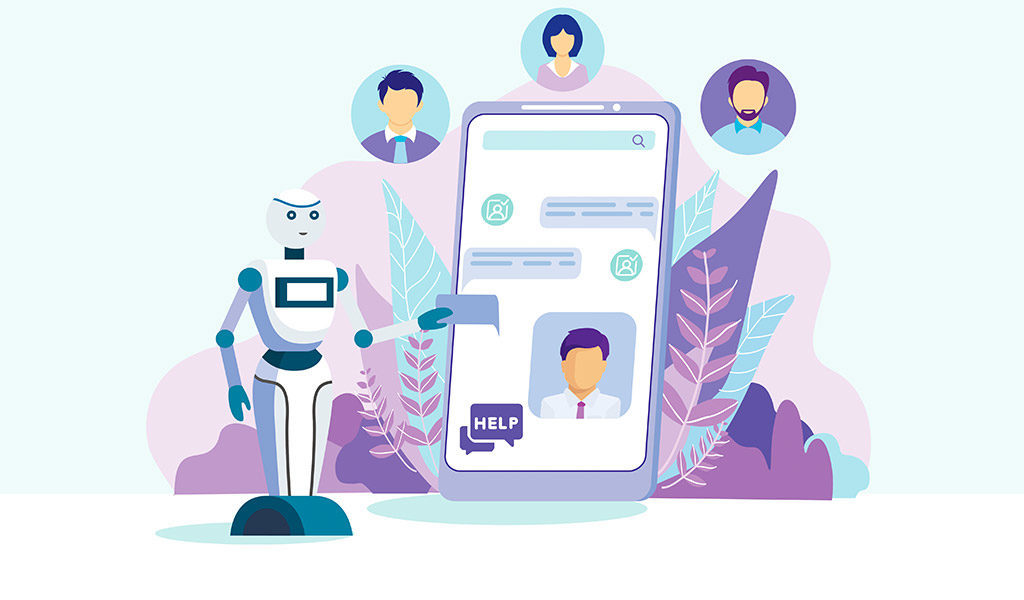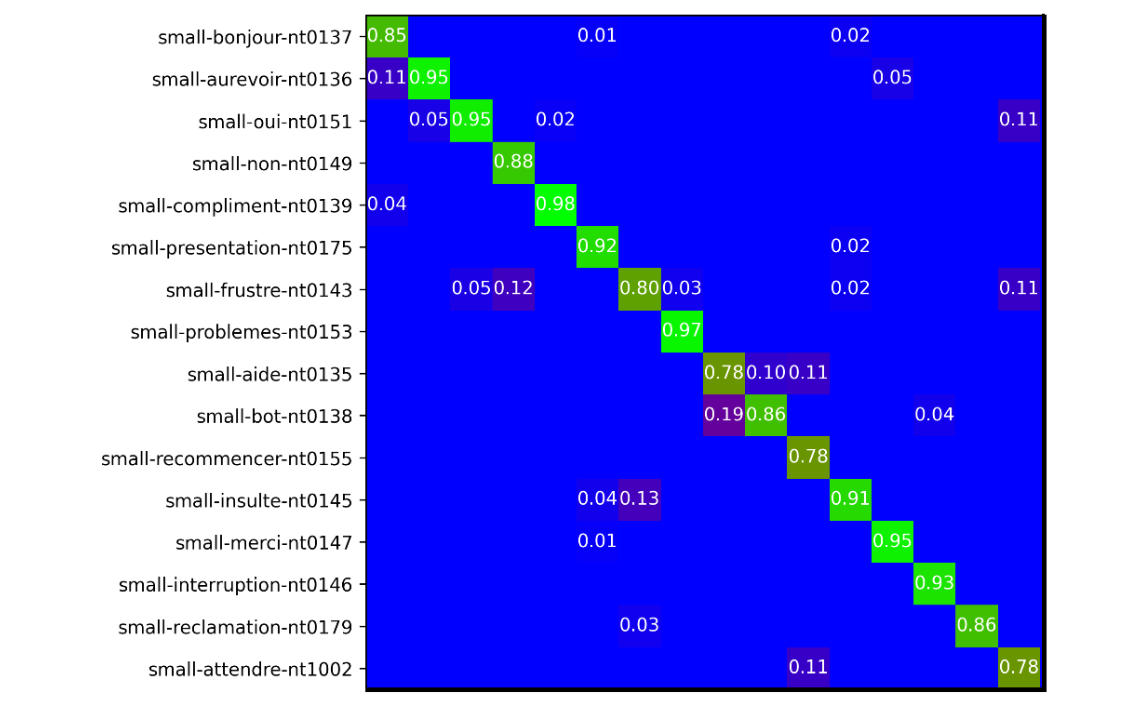Chatbots

A chatbot is an intelligent conversational agent that leverages natural language processing (NLP) to communicate seamlessly with users. With the rapid advancement of artificial intelligence and machine learning, these virtual assistants have evolved from simple rule-based systems to sophisticated AI-powered solutions capable of understanding context, sentiment, and intent. Throughout my career, I have designed and deployed multiple chatbot solutions across diverse industries, utilizing cutting-edge technologies including IBM Watson, Rasa Framework, Google Dialogflow, and custom NLP models.
Key Technologies & Skills: Natural Language Understanding (NLU), Intent Classification, Entity Recognition, Dialogue Management, REST APIs, Python, IBM Watson Assistant, Rasa, Dialogflow, CamemBert, BERT embeddings, Django REST Framework, Kubernetes/OpenShift deployment.
Transport Chatbot - IBM Watson Implementation
During my internship at IBM, I contributed to an enterprise-level chatbot project for one of France's major railroad companies. This production system was already serving thousands of daily users, and my mission was to enhance its capabilities by integrating geolocation services for non-station addresses.
Technical Challenge: The existing system could only process queries about train stations. Users frequently requested directions from arbitrary addresses, which the system couldn't handle. I implemented a solution using external geocoding APIs and route planning services to bridge this gap.
Key Implementation Details:
- Developed integration with multiple mapping APIs (Google Maps, OpenStreetMap) for address validation and geocoding
- Implemented fallback mechanisms to handle API failures and ensure high availability
- Created custom dialogue flows in IBM Watson Assistant to capture and validate address information
- Optimized response times through intelligent caching of frequent queries
Key Learning: This experience crystallized an essential principle that has guided my subsequent work: a chatbot's intelligence extends far beyond its conversational abilities. The true value lies in its capacity to access, process, and synthesize information from external knowledge sources, databases, and APIs to deliver actionable insights to users.

Healthcare Chatbots - Bridging Technology and Patient Care
The healthcare sector faces unique challenges in adopting new technologies, particularly among elderly patients and those managing chronic conditions. Digital health chatbots offer a solution by providing an intuitive, conversational interface that reduces the complexity barrier while delivering personalized medical support, medication reminders, and health education.
Impact & Benefits: These conversational agents address critical healthcare gaps including medication adherence, chronic disease management, health literacy, and reducing burden on healthcare professionals. By providing 24/7 accessibility through familiar messaging interfaces, they empower patients to take control of their health journey.
Nutritional Guidance System - Medication-Diet Integration

Problem Statement: Many medications require specific dietary modifications to maximize efficacy and minimize side effects. However, patients often struggle to translate complex nutritional requirements into practical meal choices.
Solution Architecture:
- Technology Stack: Built using Rasa Framework (Python-based open-source conversational AI platform), PostgreSQL database, RESTful API architecture
- Natural Language Processing: Implemented custom intent classification to parse medication names and dietary queries from natural language input
- Database Architecture: Designed dual-database system:
- Medical database: Mapping medications to required nutritional profiles (vitamins, minerals, macronutrients)
- Nutritional database: Converting nutrient requirements into specific food recommendations with portion sizes
- Personalization Engine: Developed recommendation algorithm considering user preferences, allergies, and dietary restrictions
- Dialogue Management: Created contextual conversation flows using Rasa's story-based approach for natural, multi-turn interactions
Key Features: Users can photograph their prescription or type medication names, and the system provides daily meal suggestions, grocery lists, and recipe recommendations tailored to optimize treatment outcomes.
Alzheimer's Support Assistant - Cognitive Aid Companion

Problem Statement: Alzheimer's disease progressively impairs memory and cognitive function, making it challenging for patients to maintain independence in daily activities. The severity ranges from mild forgetfulness to complete dependence, requiring adaptive support systems.
Solution Architecture:
- Platform: Developed using Google Dialogflow for advanced natural language understanding, deployed on Facebook Messenger for accessibility
- Adaptive Intelligence: Implemented severity-aware dialogue management that adjusts communication complexity based on patient's cognitive assessment scores
- Reminder System:
- Multi-modal reminders (text, voice, visual) for medication, appointments, and daily tasks
- Escalating notification system with family member alerts for missed critical tasks
- Contextual prompts that provide step-by-step guidance through activities
- Educational Content: Integrated video tutorials demonstrating common tasks (taking medication, meal preparation, hygiene routines)
- Machine Learning Integration: Pattern recognition to identify behavioral changes that may indicate disease progression
- Caregiver Dashboard: Real-time monitoring interface for family members and healthcare providers
User Experience Design: The interface employs simplified language, visual cues, and repetition strategies aligned with cognitive accessibility guidelines. Voice interaction capabilities accommodate users with limited digital literacy.
Impact: This system extends the period of independent living for patients while providing peace of mind for caregivers through continuous, non-intrusive monitoring and support.
Enterprise Customer Service Automation - Telecom Industry
Business Context: Telecommunications companies handle millions of customer interactions daily, with traditional call centers facing challenges of high operational costs, inconsistent service quality, and scaling limitations. Modern conversational AI offers a solution by providing instant, 24/7 support with access to complete customer context.
The Problem: A major European telecom operator had been relying on external NLP services (IBM Watson, SAP Conversational AI) for their customer service chatbot. As conversation volumes scaled exponentially, they faced:
- Escalating API costs proportional to conversation volume
- Increased latency affecting user experience (response times exceeding 2 seconds)
- Limited customization capabilities for telecom-specific terminology
- Vendor lock-in risks and data sovereignty concerns
Strategic Solution: Develop an in-house NLP engine to replace external services, optimized for French language understanding and telecom domain expertise, with sub-second response times and significantly reduced operational costs.
Machine Learning Model Development - CamemBERT Implementation
Architecture Decision: Selected CamemBERT (French-optimized BERT variant) as the foundation model due to its state-of-the-art performance on French NLP tasks. Training a language model from scratch would require prohibitive computational resources (110 million parameters, weeks of GPU time), making transfer learning the pragmatic choice.

Technical Implementation:
- Model Fine-tuning: Adapted CamemBERT embeddings for multi-class intent classification (161 distinct customer intents) using custom classification head
- Data Pipeline: Processed historical customer conversation data (500K+ annotated utterances) with data augmentation techniques to balance class distribution
- Training Infrastructure: Leveraged distributed training on GPU cluster with mixed-precision training for optimization
- Hyperparameter Optimization: Conducted systematic grid search for learning rate, batch size, and regularization parameters
Evaluation Methodology:
Implemented comprehensive evaluation framework addressing class imbalance challenges inherent in customer service data:
- Metrics Beyond Accuracy:
- Matthews Correlation Coefficient (MCC): Provides balanced measure even with severe class imbalance
- Macro-averaged F1 Score: Treats all classes equally regardless of frequency
- Per-class Precision/Recall: Identifies performance disparities across intents
- Confusion Matrix Analysis: Generated 161×161 confusion matrices to visualize misclassification patterns and identify semantically similar intents requiring disambiguation
- Error Analysis: Performed qualitative analysis of failure cases to guide iterative improvements

Results & Performance:
- Achieved 78% average intent classification accuracy, surpassing IBM Watson (72%) and SAP (70%) benchmarks
- Reduced average response latency from 2.1s to 0.3s (7x improvement)
- Particularly strong performance on high-frequency "small talk" intents (85%+ accuracy)
- Consistent performance across intent categories, demonstrating model robustness
Production Deployment - API Development & Kubernetes Orchestration
Technology Selection: Django REST Framework chosen for its comprehensive feature set including ORM database abstraction, built-in authentication/authorization, and seamless API documentation generation.
API Architecture:
- RESTful Design: Implemented standards-compliant endpoints for intent classification, entity extraction, and conversation context management
- Request Processing Pipeline:
- Input validation and sanitization
- Text preprocessing (tokenization, normalization)
- CamemBERT inference with batching for efficiency
- Post-processing and confidence scoring
- Response formatting and logging
- Performance Optimization: Implemented model caching, request batching, and connection pooling to minimize latency
- Security: API key authentication, rate limiting, IP whitelisting, and request encryption
- Monitoring: Integrated Prometheus metrics and custom logging for performance tracking and debugging

Interactive Documentation: Integrated Swagger/OpenAPI specification providing interactive API documentation, allowing developers to test endpoints directly from browser interface.
Container Orchestration & CI/CD:
- Platform: Deployed on Red Hat OpenShift (enterprise Kubernetes distribution) ensuring enterprise-grade security and operational features
- Containerization: Created optimized Docker images with multi-stage builds minimizing container size
- Auto-scaling: Configured horizontal pod autoscaler based on CPU utilization and request queue depth
- High Availability: Multi-replica deployment across availability zones with load balancing
- CI/CD Pipeline: Automated testing, building, and deployment pipeline using GitLab CI/CD
- Automated unit and integration testing
- Canary deployments for risk mitigation
- Rollback capabilities for failed deployments
- Blue-green deployment strategy for zero-downtime updates
Business Impact:
- Reduced annual NLP service costs by 65% (approximately €800K savings)
- Improved customer satisfaction scores by 15% due to faster response times
- Enabled processing of 40% more conversations with same infrastructure
- Established foundation for continuous model improvement with in-house data
- Achieved 99.9% service availability through robust architecture